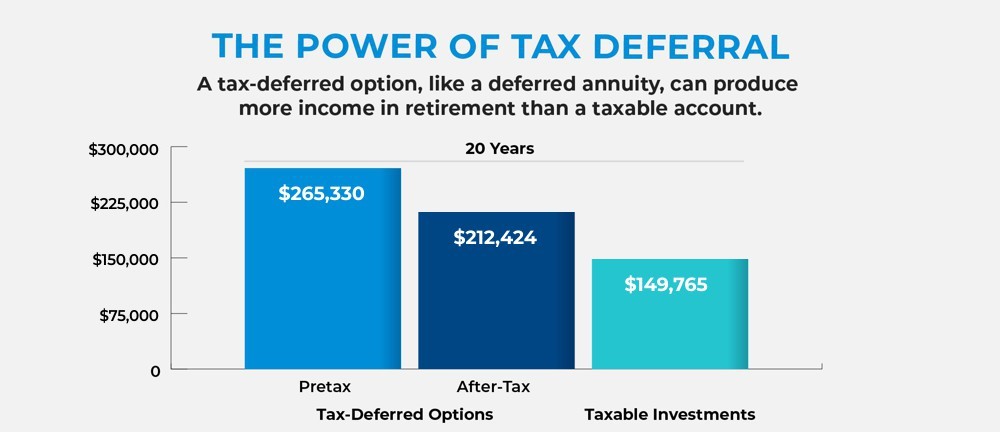All Categories
Featured
Table of Contents
This five-year general regulation and 2 adhering to exceptions apply just when the owner's death activates the payment. Annuitant-driven payments are discussed below. The first exception to the basic five-year guideline for specific beneficiaries is to accept the death benefit over a longer period, not to go beyond the expected life time of the beneficiary.
If the recipient chooses to take the survivor benefit in this approach, the advantages are exhausted like any kind of various other annuity repayments: partly as tax-free return of principal and partly taxable income. The exclusion proportion is located by using the departed contractholder's price basis and the anticipated payouts based upon the recipient's life expectancy (of shorter duration, if that is what the recipient picks).
In this technique, sometimes called a "stretch annuity", the beneficiary takes a withdrawal every year-- the called for quantity of yearly's withdrawal is based on the same tables made use of to determine the called for distributions from an IRA. There are two benefits to this technique. One, the account is not annuitized so the beneficiary retains control over the money value in the agreement.
The 2nd exception to the five-year guideline is offered just to a surviving spouse. If the designated beneficiary is the contractholder's spouse, the spouse may elect to "enter the footwear" of the decedent. In effect, the spouse is treated as if he or she were the owner of the annuity from its creation.
Tax treatment of inherited Tax-deferred Annuities
Please note this uses just if the partner is called as a "assigned beneficiary"; it is not offered, for example, if a depend on is the recipient and the spouse is the trustee. The basic five-year regulation and both exceptions just relate to owner-driven annuities, not annuitant-driven contracts. Annuitant-driven agreements will pay survivor benefit when the annuitant dies.

For functions of this conversation, think that the annuitant and the owner are different - Annuity rates. If the contract is annuitant-driven and the annuitant passes away, the death activates the survivor benefit and the beneficiary has 60 days to make a decision how to take the survivor benefit subject to the terms of the annuity contract
Note that the alternative of a spouse to "tip right into the footwear" of the owner will not be available-- that exception uses just when the proprietor has passed away yet the proprietor didn't die in the circumstances, the annuitant did. Finally, if the recipient is under age 59, the "death" exemption to stay clear of the 10% fine will certainly not relate to an early circulation once more, because that is available only on the fatality of the contractholder (not the fatality of the annuitant).
Numerous annuity companies have internal underwriting plans that refuse to issue contracts that name a different proprietor and annuitant. (There might be strange situations in which an annuitant-driven contract meets a clients one-of-a-kind demands, but usually the tax obligation disadvantages will surpass the advantages - Immediate annuities.) Jointly-owned annuities might pose comparable issues-- or a minimum of they may not serve the estate preparation feature that jointly-held properties do
Consequently, the death advantages need to be paid within five years of the initial owner's fatality, or subject to both exceptions (annuitization or spousal continuance). If an annuity is held jointly in between an other half and spouse it would appear that if one were to pass away, the other can simply proceed ownership under the spousal continuance exemption.
Assume that the couple named their boy as beneficiary of their jointly-owned annuity. Upon the death of either proprietor, the firm has to pay the fatality advantages to the child, who is the recipient, not the making it through partner and this would most likely beat the owner's intents. At a minimum, this instance directs out the intricacy and uncertainty that jointly-held annuities pose.
Inherited Joint And Survivor Annuities tax liability
D-Man wrote: Mon May 20, 2024 3:50 pm Alan S. wrote: Mon May 20, 2024 2:31 pm D-Man composed: Mon May 20, 2024 1:36 pm Thank you. Was wishing there might be a device like setting up a recipient IRA, yet appears like they is not the situation when the estate is configuration as a recipient.

That does not recognize the kind of account holding the acquired annuity. If the annuity remained in an inherited individual retirement account annuity, you as executor should be able to designate the acquired individual retirement account annuities out of the estate to acquired IRAs for every estate beneficiary. This transfer is not a taxable event.
Any type of distributions made from acquired Individual retirement accounts after project are taxed to the beneficiary that received them at their regular earnings tax rate for the year of circulations. If the acquired annuities were not in an IRA at her fatality, after that there is no way to do a direct rollover right into an acquired IRA for either the estate or the estate recipients.
If that takes place, you can still pass the circulation through the estate to the individual estate recipients. The earnings tax return for the estate (Form 1041) might include Kind K-1, passing the revenue from the estate to the estate recipients to be exhausted at their specific tax rates as opposed to the much greater estate earnings tax obligation rates.
Inherited Annuity Payouts tax liability

: We will produce a plan that consists of the very best items and functions, such as enhanced death advantages, premium bonus offers, and permanent life insurance.: Get a tailored approach developed to maximize your estate's value and minimize tax liabilities.: Implement the chosen method and get continuous support.: We will certainly assist you with establishing up the annuities and life insurance policy plans, giving constant support to make sure the plan remains effective.
Must the inheritance be pertained to as an earnings related to a decedent, then tax obligations might apply. Normally talking, no. With exception to pension (such as a 401(k), 403(b), or IRA), life insurance policy earnings, and financial savings bond interest, the beneficiary generally will not have to birth any kind of earnings tax obligation on their inherited riches.
The quantity one can inherit from a count on without paying taxes depends on various variables. The government inheritance tax exception (Retirement annuities) in the USA is $13.61 million for individuals and $27.2 million for couples in 2024. Private states might have their very own estate tax regulations. It is advisable to consult with a tax obligation expert for exact info on this issue.

His objective is to simplify retirement preparation and insurance policy, guaranteeing that customers comprehend their selections and secure the very best coverage at unequalled prices. Shawn is the creator of The Annuity Specialist, an independent online insurance company servicing customers across the USA. Via this system, he and his team purpose to remove the guesswork in retired life planning by assisting individuals discover the best insurance coverage at one of the most competitive prices.
Table of Contents
Latest Posts
Exploring the Basics of Retirement Options Everything You Need to Know About What Is Variable Annuity Vs Fixed Annuity Defining the Right Financial Strategy Features of Smart Investment Choices Why Ch
Breaking Down Choosing Between Fixed Annuity And Variable Annuity Key Insights on Your Financial Future Breaking Down the Basics of Investment Plans Features of Smart Investment Choices Why Retirement
Analyzing Strategic Retirement Planning A Closer Look at How Retirement Planning Works Breaking Down the Basics of Investment Plans Features of Fixed Index Annuity Vs Variable Annuity Why Choosing the
More
Latest Posts